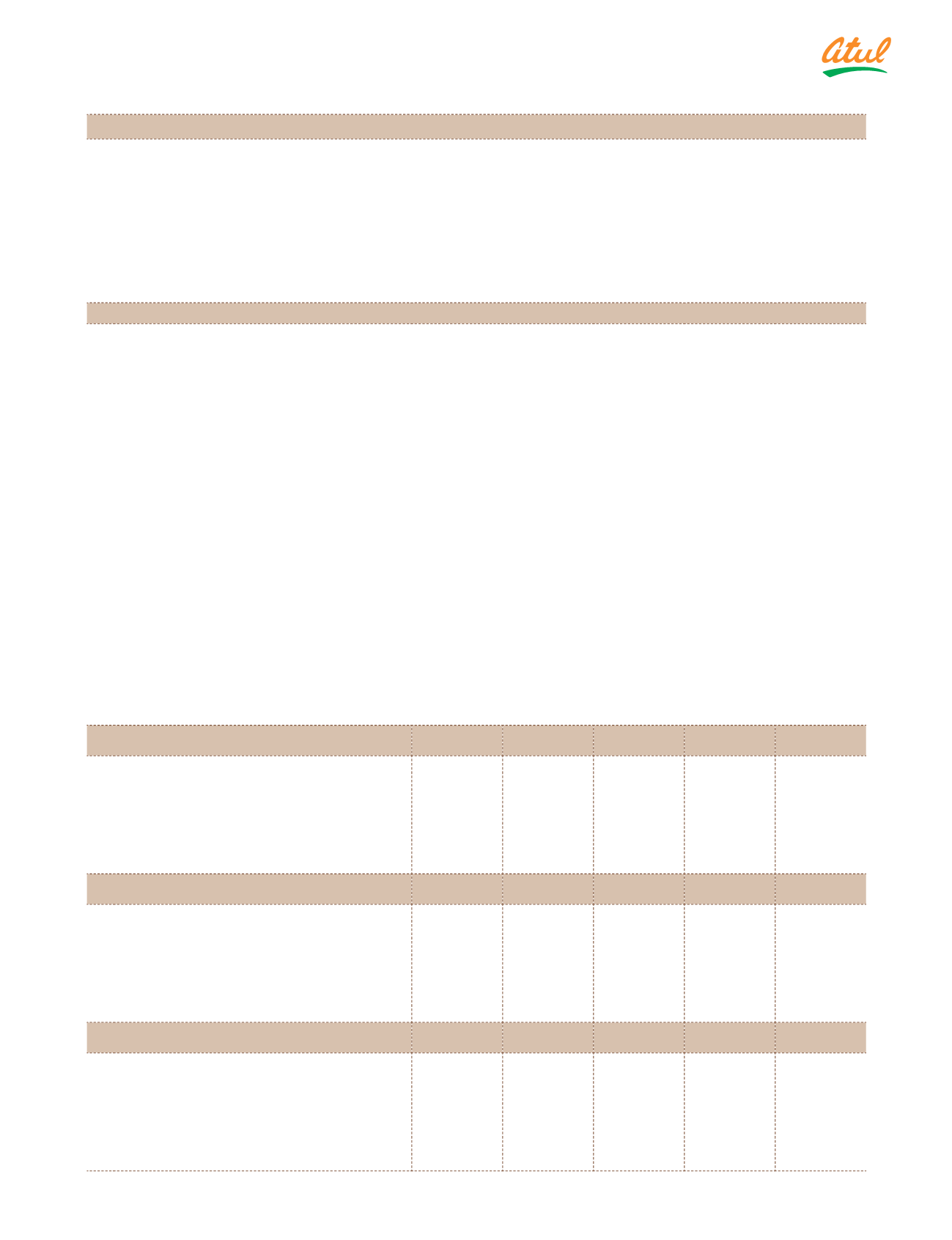

137
The carrying amounts of trade receivables, trade payables, other receivables, short-term security deposits, bank deposits with
more than 12 months maturity, capital creditors, dividend receivable, other liabilities (including discount payable) and cash
and cash equivalents including bank balances other than cash and cash equivalents are considered to be the same as their fair
values due to the current and short-term nature of such balances.
The fair values for loans and investment in Preference shares were calculated based on cash flows discounted using a current
lending rate.
The fair values of non-current borrowings are based on discounted cash flows using a current borrowing rate. They are
classified as level 3 fair values in the fair value hierarchy due to the use of unobservable inputs, including own credit risk.
For financial assets and liabilities that are measured at fair value, the carrying amounts are equal to the fair values.
Note 27.8 Financial Risk Management
Risk Management is an integral part of the business practices of the Company. The framework of Risk Management
concentrates on formalising a system to deal with the most relevant risks, building on existing Management practices,
knowledge and structures. With the help of a reputed international consultancy firm, the Company has developed and
implemented a comprehensive Risk Management System to ensure that risks to the continued existence of the Company as a
going concern and to its growth are identified and remedied on a timely basis. While defining and developing the formalised
Risk Management System, leading standards and practices have been considered. The Risk Management System is relevant to
business reality, pragmatic and simple and involves the following:
i) Risk identification and definition: Focused on identifying relevant risks, creating | updating clear definitions to ensure
undisputed understanding along with details of the underlying root causes | contributing factors.
ii) Risk classification: Focused on understanding the various impacts of risks and the level of influence on its root causes. This
involves identifying various processes generating the root causes and clear understanding of risk interrelationships.
iii) Risk assessment and prioritisation: Focused on determining risk priority and risk ownership for critical risks. This involves
assessment of the various impacts taking into consideration risk appetite and existing mitigation controls.
iv) Risk mitigation: Focused on addressing critical risks to restrict their impact(s) to an acceptable level (within the defined risk
appetite). This involves a clear definition of actions, responsibilities and milestones.
v) Risk reporting and monitoring: Focused on providing to the Board and the Audit Committee periodic information on risk
profile evolution and mitigation plans.
a) Management of liquidity risk
The principal sources of liquidity of the Company are cash and cash equivalents, borrowings and the cash flow that is
generated from operations. The Company believes that current cash and cash equivalents, tied up borrowing lines and cash
flow that is generated from operations is sufficient to meet requirements. Accordingly, liquidity risk is perceived to be low.
The following table shows the maturity analysis of financial liabilities of the Company based on contractually agreed
undiscounted cash flows as at the Balance Sheet date:
(
`
cr)
As at March 31, 2017
Note
Carrying
amount
Less than
12 months
More than
12 months
Total
Borrowings
15
155.23
155.23
–
155.23
Interest on non-current borrowings
0.46
–
0.46
Trade payables
19
329.06
329.06
–
329.06
Security and other deposits
16
19.30
19.30
–
19.30
Capital creditors
16
18.38
18.38
–
18.38
Other liabilities
16
8.79
8.40
0.39
8.79
Derivatives (settlement on net basis)
2.43
2.43
–
2.43
As at March 31, 2016
Note
Carrying
amount
Less than
12 months
More than
12 months
Total
Borrowings
15
301.67
280.20
21.47
301.67
Interest on non-current borrowings
1.26
0.45
1.71
Trade payables
19
294.19
294.19
–
294.19
Security and other deposits
16
18.51
18.51
–
18.51
Capital creditors
16
17.95
17.95
–
17.95
Other liabilities
16
12.56
11.80
0.76
12.56
Derivatives (settlement on net basis)
1.34
1.34
–
1.34
As at April 01, 2015
Note
Carrying
amount
Less than
12 months
More than
12 months
Total
Borrowings
15
278.66
224.58
54.08
278.66
Interest on non-current borrowings
2.27
1.61
3.88
Trade payables
19
264.89
264.89
–
264.89
Security and other deposits
16
14.93
14.93
–
14.93
Capital creditors
16
8.82
8.82
–
8.82
Other liabilities
16
14.15
13.62
0.53
14.15
Derivatives (settlement on net basis)
0.56
0.56
–
0.56
Notes
to the Financial Statements
Note 27.7 Fair value measurements
(continued)


















